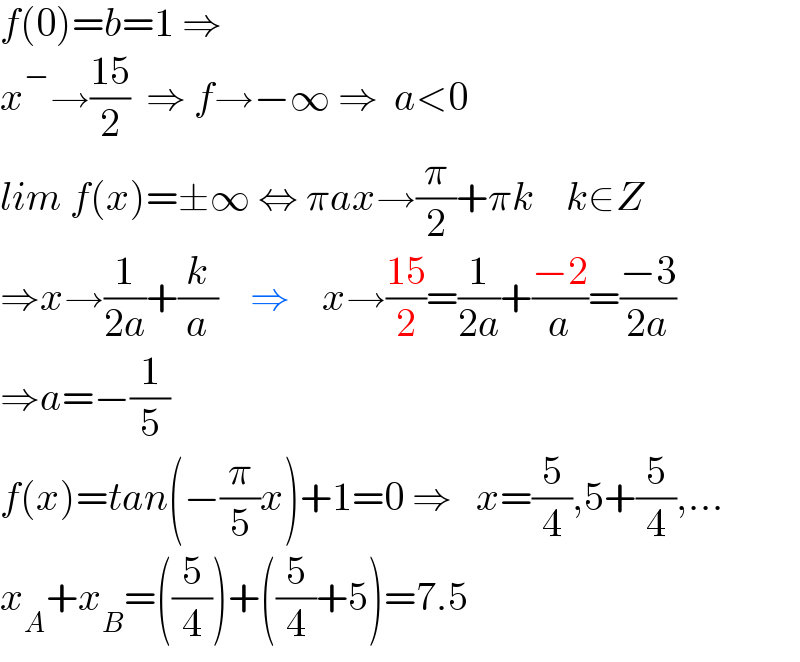
Question and Answers Forum
Question Number 182721 by mnjuly1970 last updated on 13/Dec/22

Answered by Acem last updated on 13/Dec/22

Answered by mahdipoor last updated on 13/Dec/22

Commented by Acem last updated on 13/Dec/22

Commented by mahdipoor last updated on 13/Dec/22

Commented by Acem last updated on 13/Dec/22

Commented by mahdipoor last updated on 14/Dec/22
![[k] is not important , [πax_2 =πa((15)/2)=((−3π)/2)] is important, im say [πax=(π/2)+kπ] so k=−2 when [πax_2 =((−3π)/2)=(π/2)+(−2)π]](Q182766.png)
Commented by mnjuly1970 last updated on 14/Dec/22

